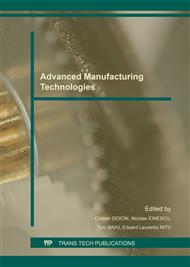p.147
p.153
p.161
p.167
p.173
p.181
p.187
p.193
p.199
Experimental and Numerical Investigation on the Torsional Behaviour of Filament Winding-Manufactured Composite Tubes
Abstract:
The present work is focused in the examination of the torsional behaviour of composite tubes by a combined experimental and numerical approach. Glass and carbon composite tubes were manufactured by the filament winding technique. All the tubes were fabricated with glass and carbon Fiber orientation at ±45°. The effect of the torsional loading on the mechanical strength of the glass and carbon composite tubes was initially studied experimentally. Angular velocity of 5° per min was used as torsion test speed while torque-twisting angle changes were recorded. The torsional behaviour of composite tubes was also simulated using Finite Element Analysis (FEA). An elastic orthotropic composite model was used for the simulations. The normal and shear stress contours were obtained from the FE models, while the theoretical relation of the torque versus the twisting angle was calculated. Comparison of the numerical and experimentally obtained results has shown a relatively similar torsional behaviour.
Info:
Periodical:
Pages:
173-178
Citation:
Online since:
April 2016
Price:
Сopyright:
© 2016 Trans Tech Publications Ltd. All Rights Reserved
Share:
Citation:


